
Curator’s statement
Cape Town is one of those rare places where stunning natural beauty meets rich culture around every corner. We spent six days there in May to celebrate our daughter’s college graduation before a weeklong safari. From lush botanical gardens and historic wine farms to colorful neighborhoods and dramatic coastal drives, every day brings something different and enjoyable.
The Fora Difference
Book with Audra to access exclusive perks and experiences on your trip.
Killer perks
Free upgrades, spa credits and more—we got you
Personalized recs
Customized travel planning for your style
Insider knowledge
Expert advice from people who’ve actually been there
Where to stay
Unlock perks by contacting Audra to book your trip.
Day 1: Arrival
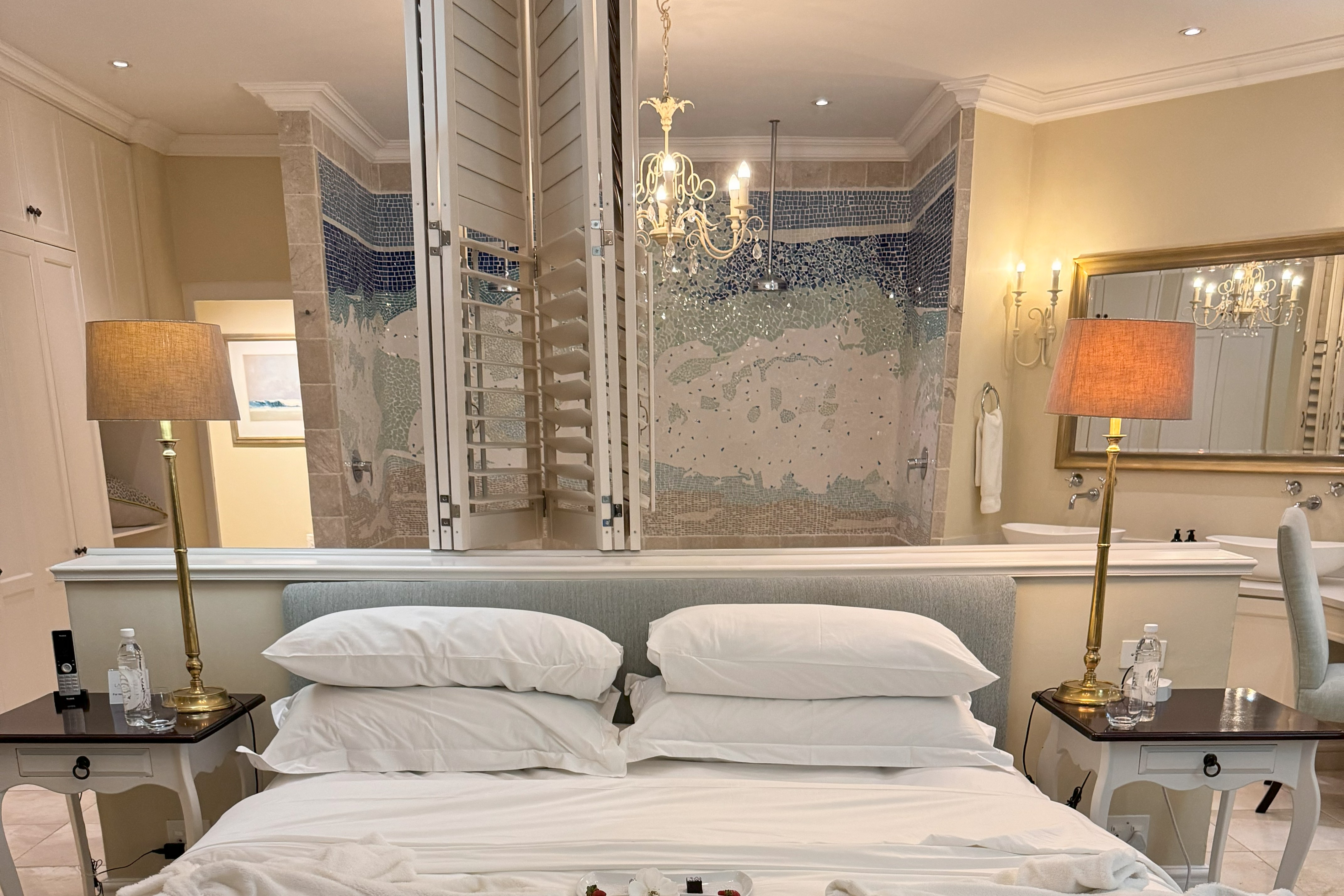
Our room at Last Word Constantia
We landed in the early evening at Cape Town International Airport. After a short drive, we arrived at The Last Word Constantia, a quiet and luxurious 9-suite retreat nestled in the heart of the Constantia Valley, the oldest wine region in South Africa. This boutique hotel is known for its personalized service and serene outdoor gardens and pool area and is a 25-minute drive from the Cape Town Waterfront.
Last Word’s staff was warm and welcoming, suggesting a late dinner at Peddler’s Pub, serving fresh seafood, pasta, burgers and sandwiches, just a stroll through the garden gate. It was the perfect, cozy spot to unwind after a long day of travel.
Day 2: Botanical beauty and wine tastings

Groot Constantia Winery
After a wonderful breakfast in the garden room at Last Word, we headed to Kirstenbosch National Botanical Garden. This is one of the world’s great botanical gardens with views of Table Mountain behind. Even if you're not an avid gardener, it is definitely worth a visit! We joined a free tour, offered Mondays through Fridays at 10 am, 11 am and 2 pm. The agave, the protea and birds of paradise were in full bloom, and the suspended bridge walk in the canopy was stunning.
In the afternoon, we took an Uber (readily available in Cape Town) to Groot Constantia. It is South Africa’s oldest wine estate, founded in 1685 by French Huguenots. The estate’s history is as rich as its wines, and the tasting session was a delightful way to immerse ourselves in the region’s vinous heritage. The wines have been enjoyed by many, including Napolean Bonaparte, Charles Dickens and Jane Austen.
Dinner that night was at La Colombe, a culinary institution, nestled among the vineyards. The multi-course tasting menu and wine pairing was an event, each dish better than the last, and the service was choreographed theater. We added the wine cellar course, which was a treat. La Columbe was awarded The Top 50 Restaurant in the World in 2024, as well as Best Restaurant in Africa.
Tip: I highly recommend making advance reservations and adding it to the must-do dining on your Cape Town itinerary.
Day 3: Clarendon Bantry Bay
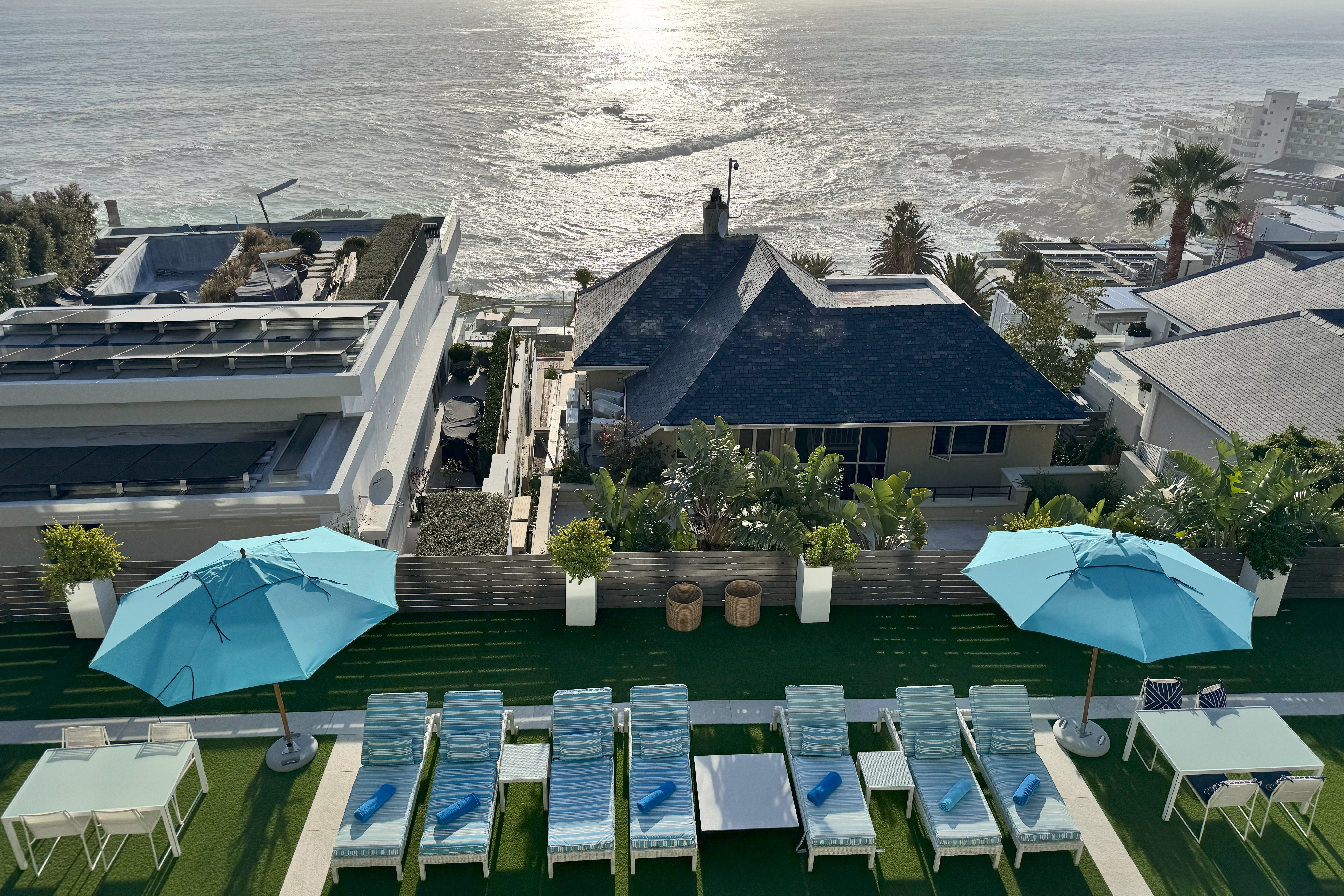
Clarendon Bantry Bay, View from the Lobby balcony
After a leisurely breakfast at Last Word Constantia, it was time to move to Clarendon Bantry Bay. This is a boutique hotel with views of the Atlantic Ocean from our pool front room on the first floor. The room was quiet, spacious and comfortable.
The soothing sound of waves crashing against the rocks became a constant companion. The manager, Shirley, was incredibly welcoming and friendly. She insisted on driving us to the start of the waterfront walk — she made us feel like we were family. The hotel is a quick cab or Uber ride to the waterfront, Table Mountain and downtown areas.
We had a leisurely day, walking along the Beach Road waterfront, viewing the sculpture gardens and to the bustling and touristy Victoria and Alfred Waterfront for shopping and lunch.
Our dinner that night was at the Belly of the Beast, a unique 30-seat restaurant and dining experience in the downtown area. There are no menu options or set amount of courses. All you do is show up and trust the staff to satisfy you with seasonal offerings from locally sourced, sustainable producers and use every part of the animal. Some dishes may test your boundaries, but the menu is balanced and we thoroughly enjoyed it, even though we did push our boundaries on a few dishes!
Day 4: Cape Town’s Highlights
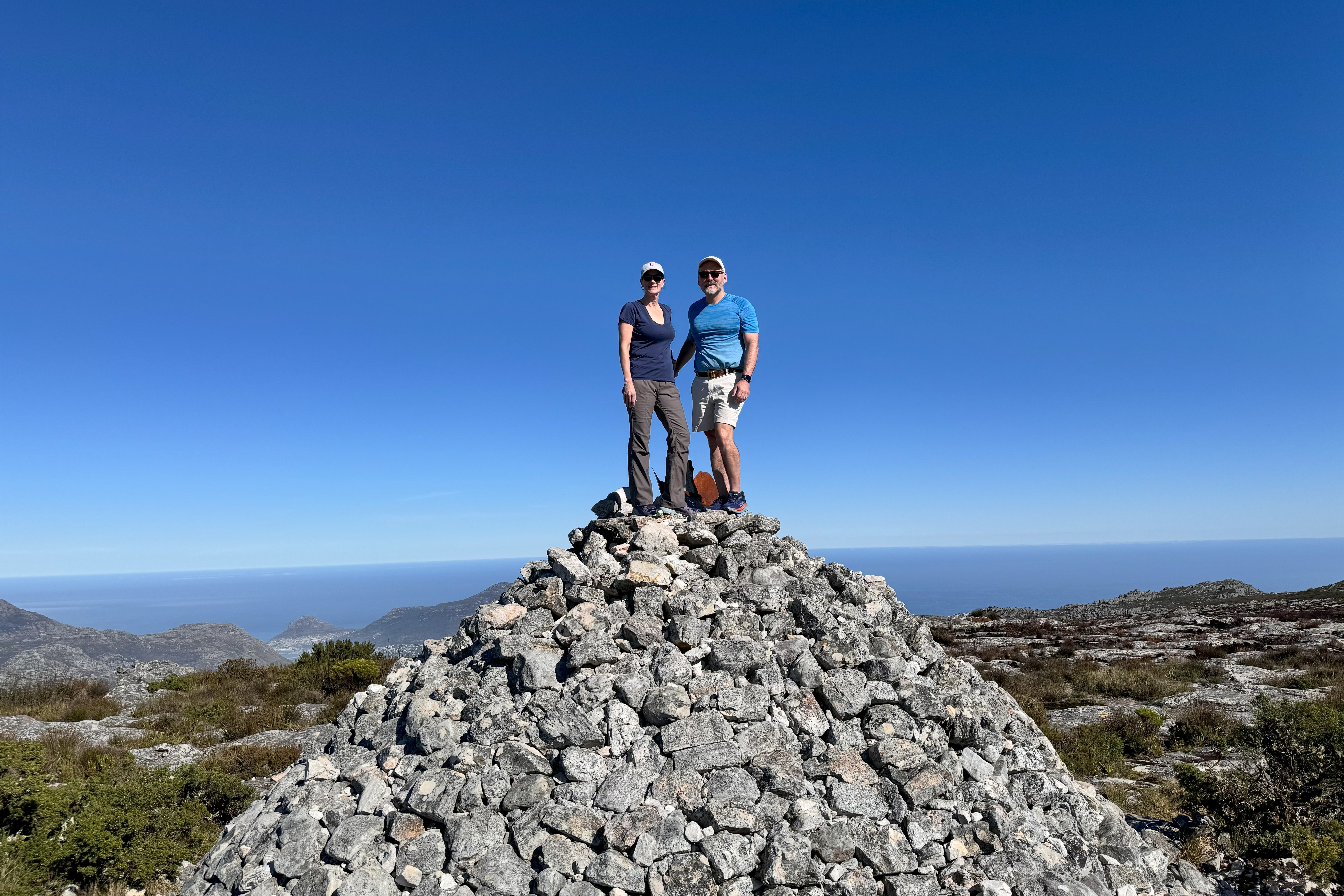
Table Mountain Hike-Maclear's Beacon Trail
A visit to the colorful Bo-Kaap neighborhood offered a glimpse into the city’s cultural diversity. Originally founded in the 1760s, slaves and political exiles from Dutch colonies of Indonesia’s Batavia, Sumatra, Java and East Africa, who spoke Malay, became known as the “Cape Malay” community. The community was allowed to paint houses vibrant colors as an expression of freedom. Mainly a Muslim community now, the oldest mosque in South Africa is here and houses a museum of Bo-Kaap’s rich history.
A highlight of the day was the express cable car ride to the top of Table Mountain, where the panoramic views of the city, ocean and distant mountains were simply breathtaking. We hiked two miles around the top of Table Mountain on Maclear's Beacon Trail. Leaving the congested tourist area with tourists snapping Selfie and Insta pictures, we felt like we had the mountain to ourselves. It was peaceful and quiet, with the landscape full of blooming succulents and protea, and wild birds and frogs calling. Book your cable car ride in advance and early in your stay, go on the first clear day. The cable car closes in high winds and bad weather.
We regretted not getting tickets to Robben Island in advance during our visit. Definitely book in advance of your stay! We would have loved to have seen the place of Nelson Mandela's imprisonment and learned more about apartheid history.
Day 5: Penguins, ostriches and ocean views
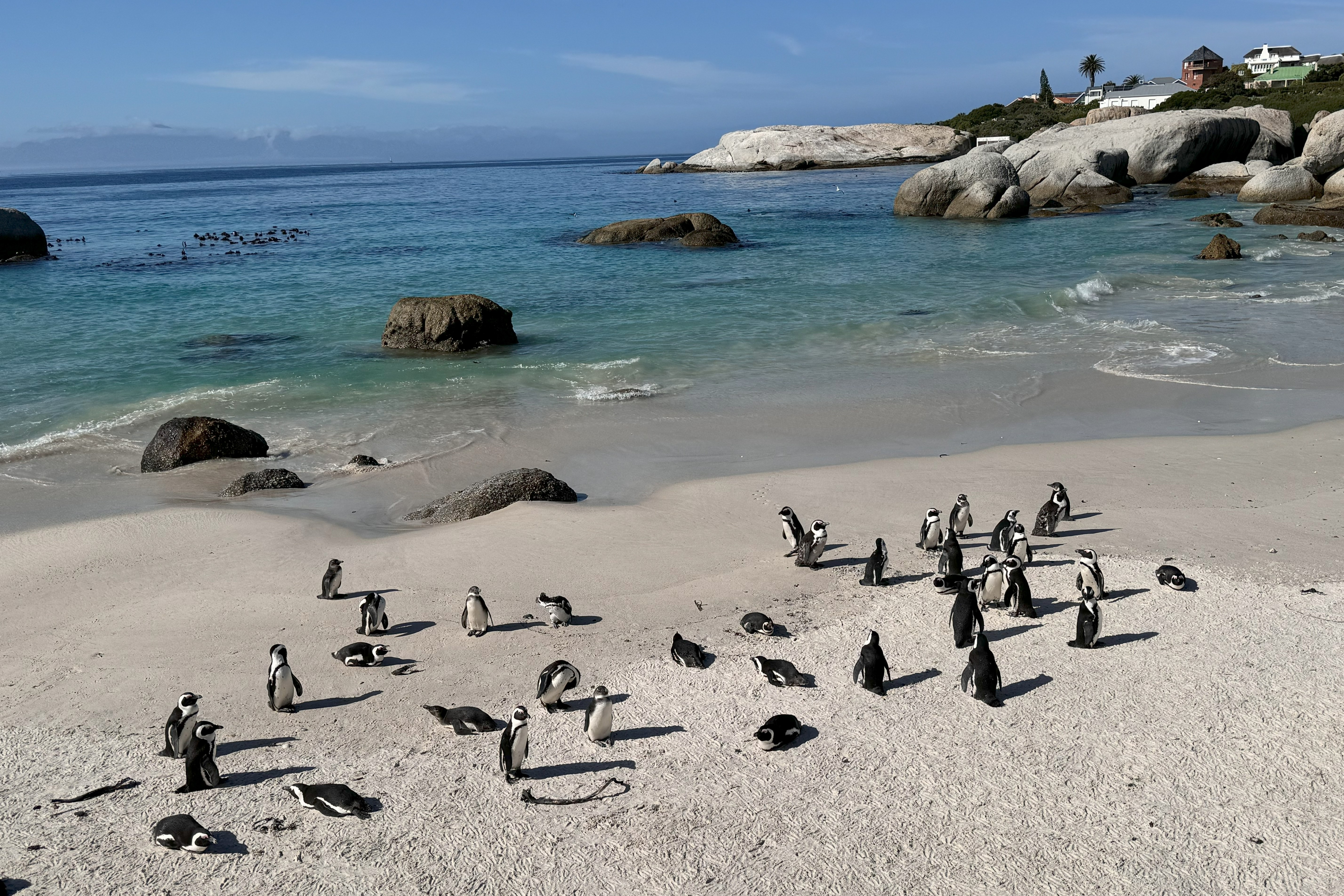
Penguins at Boulders Beach
This was one of my favorite days of our Cape Town stay and was all about the natural wonders of the Cape Peninsula.
We drove to a coastal town to watch the fisherman dry their fish and locals shop. It was interesting to see the "Shark Watchers" huts along the coast, looking for great white sharks. It's possible to cage dive in the area, if that's a close encounter you'd enjoy...but not us!
Our drive led to Boulders Beach, home to a colony of African penguins. From the boardwalk, we thoroughly enjoyed these endearing creatures waddle along the beach, launch from the rocks for swims, have bird fights, nurture babies and pair off. Plan to spend at least an hour or more to take it all in. It was hard to stop watching their antics!
Next, it was off to the Cape of Good Hope, the southwesternmost point of Africa. The rugged cliffs and dramatic seascapes made for some stunning photos, including wild ostriches roadside. While we didn’t carve out time to hike, there are some wonderful trails in the park (beware of the baboons, they can be aggressive, especially if you have food).
The return journey included a drive over Chapman’s Peak, one of the world’s most scenic coastal roads. You will see sheer drops to the ocean on one side and towering cliffs on the other.
Day 6: Stellenbosch and Franschhoek
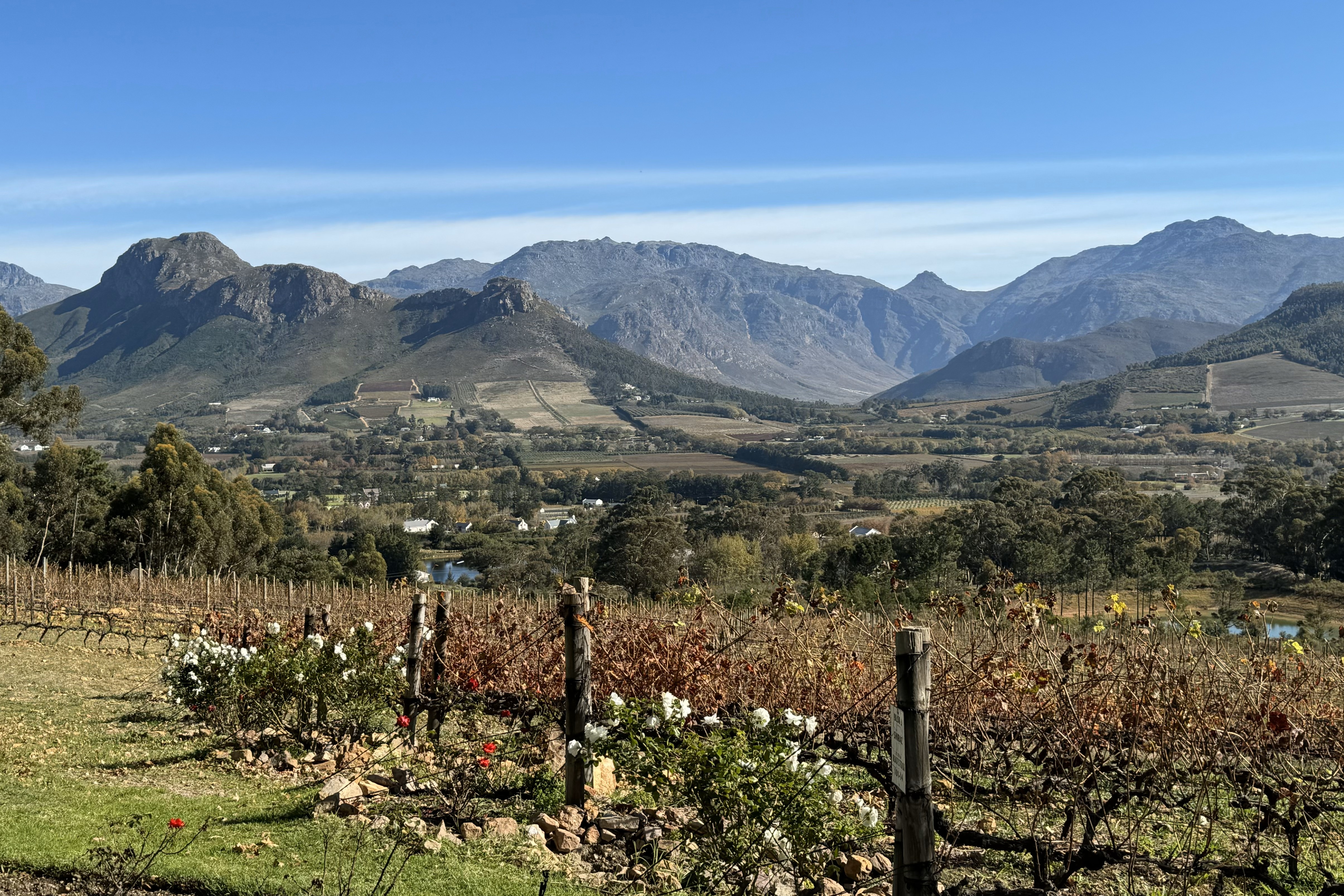
La Petite Ferme Lunch View
Our final day began with an educational drive outside the city through the Townships, racially segregated neighborhoods, forcing nonwhites out of the city. Our guide, Tony, had spent his teen years living with his grandmother in there, and offered personal insights into the complex socio-economic fabric of South Africa.
We then drove to the Cape Winelands regions of Stellenbosch and Franschhoek. We visited Boschendal Wine Estate and Mullineaux wineries. The area is simply gorgeous with mountains, rolling hills, gardens and vineyards. We stopped briefly in Franschhoek to admire the Cape Dutch architecture and to shop for souvenirs. Winemaking was influenced by the French Huguenots fleeing religious persecution in France in the late 1600s. We tasted many exceptional wines in beautiful settings.
Our 3-course lunch was at Le Petite Ferme and was another favorite, seated alfresco with stunning vineyard views and delicious farm-to-table cuisine.
I would highly recommend staying a few nights in the area. If we were to do our trip again, I would have cut a few nights in Cape Town for a stay at Le Petite Ferme or the Leeu family of three hotels in the Winelands. I also recommend booking a bicycle tour of the area.
Need to know
Plan for all four seasons in a day: Cape Town's weather is famously unpredictable — sunny one minute, windy or misty the next. Layers are key. Always have a light jacket or windbreaker with you, especially if you're heading up Table Mountain or to the coast.
For day trips, rent a car: Driving is on the left, and the roads are well-maintained. Just avoid night driving in unfamiliar areas, keep your doors locked and never leave anything (including phone chargers) visible.
Use Bolt or Uber in the city: For getting around Cape Town proper, rideshare apps like Bolt or Uber are safe, affordable and widely used. They are especially helpful if you don’t want to drive or worry about parking.
Safety first: Cape Town is a fantastic city, but like any major city, it’s smart to be aware. Don’t flash valuables, stay in well-populated areas at night and ask your hotel concierge which neighborhoods to avoid after dark.
Cash & cards: Credit cards are widely accepted. But it’s a good idea to carry a small amount of cash (South African Rand) for tips, markets or places that don’t accept cards.
Tipping etiquette: A 10–15% tip is customary at restaurants. You’ll also see parking attendants and car guards — tipping R5 to R10 is appreciated.
Respect history: Cape Town has a complex past. A visit to Robben Island, District Six Museum or an apartheid walking tour can provide important context and deepen your appreciation of the city.
Sunscreen, always: The UV index is high, even on cloudy days. Bring and use reef-safe sunscreen, especially if you’re heading to the beach.
Travel adapter: South Africa uses plug types C, D, M and N, with 230V voltage. A universal adapter with surge protection is your friend.
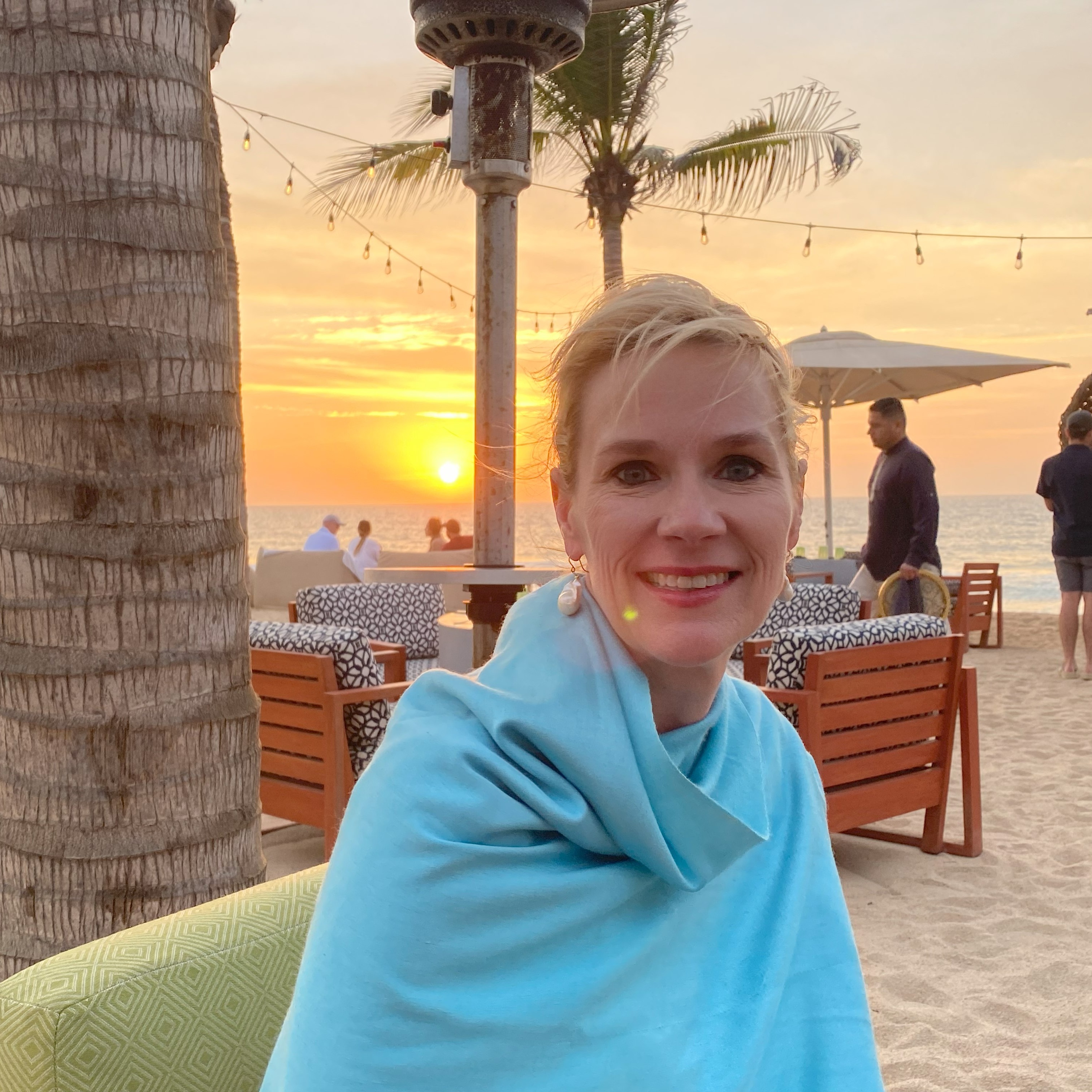
Travel Advisor
Audra Thomas

Get in touch with Audra
Did you like this guide? Reach out to customize and book your own experience. Or, just to chat about travel in general.
You can normally expect a response from Audra within a business day or so. You’ll also be subscribed to our travel newsletter (you can unsubscribe at any time).
For more inspiration and insider recommendations, visit our Cape Town page.